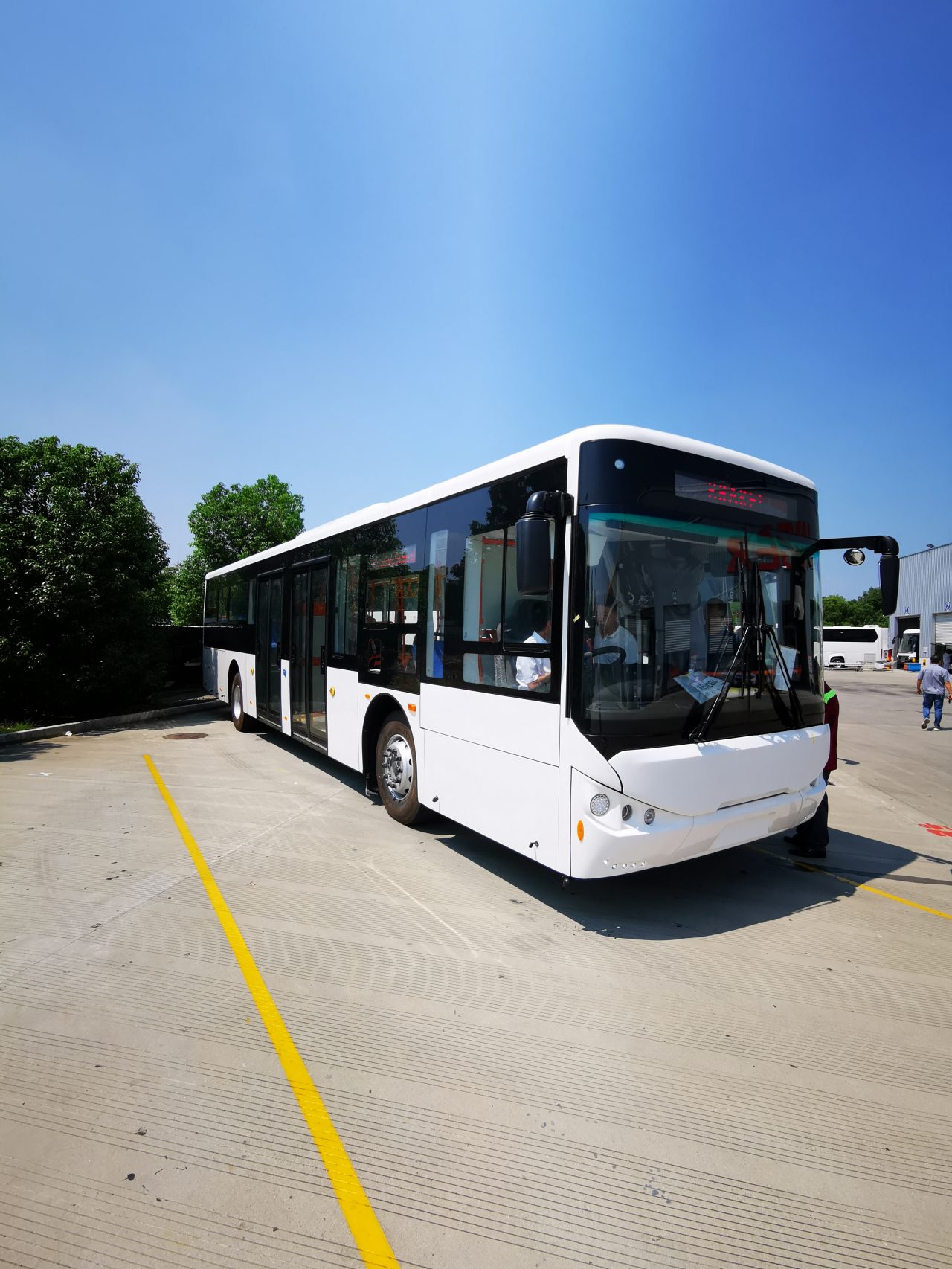
The Scania City Bus: An Efficient and Sustainable BRT Solution
13 JANUARY 2021
A first in East Africa for the company, Scania East Africa has introduced to the market its city bus that has been built according to the Nairobi Metropolitan Area Transport Authority (NaMATA) specifications for BRT buses intended for use in Kenya. The bus built by HIGER, a body builder in China, on a Scania K250 UB 4x2 LB chassis, showcases Scania’s capability of delivering a safe, reliable, environmentally friendly and efficient BRT solution for the region.
At Scania, our vision of driving the shift towards a sustainable transport system is paramount, and in achieving this, the engine of the city bus fulfils the emission level requirements for Euro 5. The bus runs on diesel and adblue, and the engine is also adapted to be driven on up to 100% biodiesel in accordance with EN14214, or a mixture of biodiesel and diesel in accordance with EN590. A step in the right direction in attaining sustainable transport systems in the region.
Not compromising on safety, the bus has been fitted with an automatic gearbox, an integrated hydraulic retarder and an automatic hill hold function for controlling the bus stop brake. When the driver has braked the vehicle on an uphill gradient, the brakes are automatically kept applied with the hill hold function.
Built for 91 passengers (37 seated and 54 standing) and one wheelchair bay to accommodate persons with disabilities, and equipped with air suspension on all the axles, the bus promises passengers a comfortable mode of transport for their daily commute. In further accommodating persons with disabilities and making it easier for passengers to get on and off the bus, the bus has kneeling control and is supplemented with the option of raising or lowering the entire vehicle. The bus can be raised approximately 100mm and lowered by the same amount, and it returns to is normal level automatically at speeds exceeding 30 km/h or with a switch.
“We are targeting the national government, bus operators, county governments, institutions such as Kenya Railways, Kenya Airports Authority and Kenya Ports Authority to purchase the bus. We are ready to bring in CKD (Completely Knocked-Down) units to be assembled at AVA (Associated Vehicle Assemblers Ltd) in Mombasa, for both chassis and body when there is demand for the unit,” explains Peter Gwaro, Pre-Sales Manager, Scania East Africa.
Solving Urban Mobility Challenges
Backed by over 100 years of experience in bus operations, Scania has proudly gained the expertise in developing BRT solutions to solve urban mobility challenges for cities across the world. Bus systems are intended to improve the quality of life and help in decongesting the roads in cities. Enabling cities to have sustainable and efficient transport systems that are cost-efficient and have environmental benefits.
In solving these mobility challenges, Scania develops and tailor-makes solutions for cities according to their needs. Buses are customised to achieve the best in passenger capacity, interior layout and other key criteria. With our BRT expertise, we can also provide consultancy services to advise on ecosystem partnerships that are needed to successfully implement bus systems, from developing unique solutions for ticketing, real-time tracking and infrastructure planning.
An example being the city of Accra in Ghana where Scania was contracted to roll out the most comprehensive and complete BRT system in the company’s history. With 245 buses, the BRT system in Accra involved long-term financing, an electronic ticketing system, a modern workshop for service and maintenance of all the vehicles, training for 600 bus drivers, and advice and support on starting up and operating the BRT system.
A gamechanger now in the industry in Kenya, and with an effective transport system being the backbone of any city, the economic benefits of having such city buses on our roads benefit the city, the public and the bus operators. Not forgetting that road safety will also largely be improved with systems where buses are separated from other traffic.